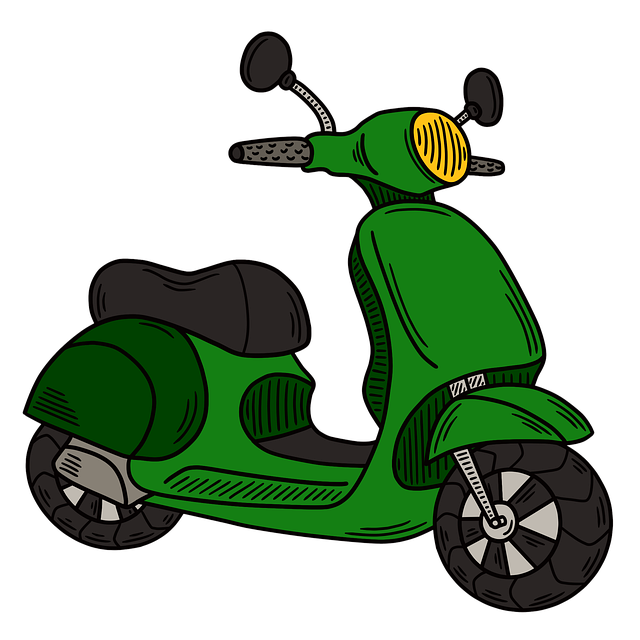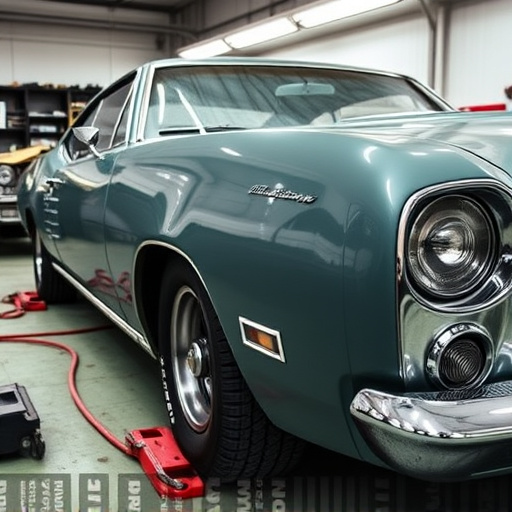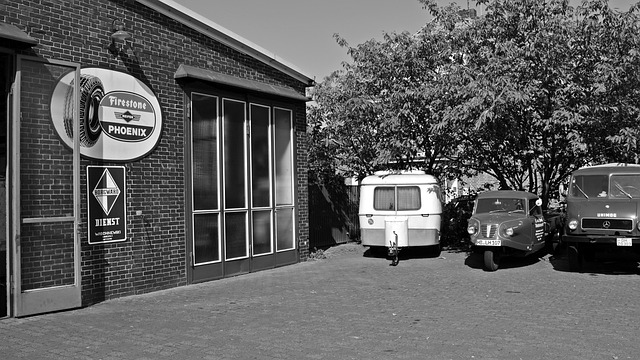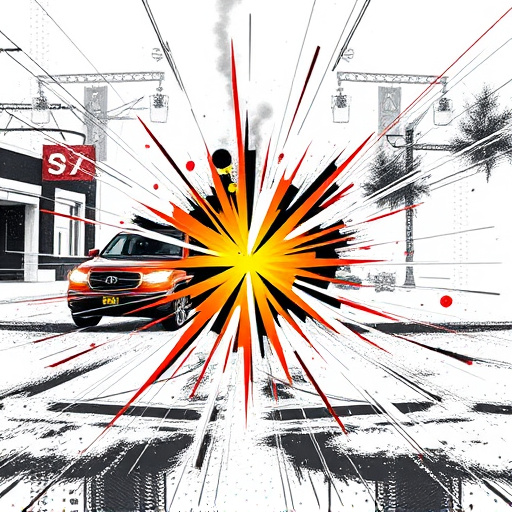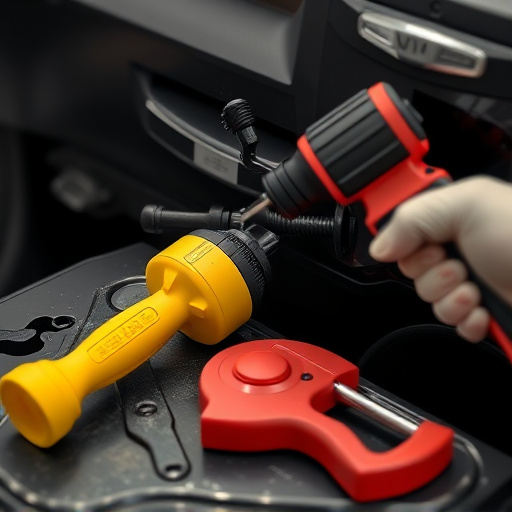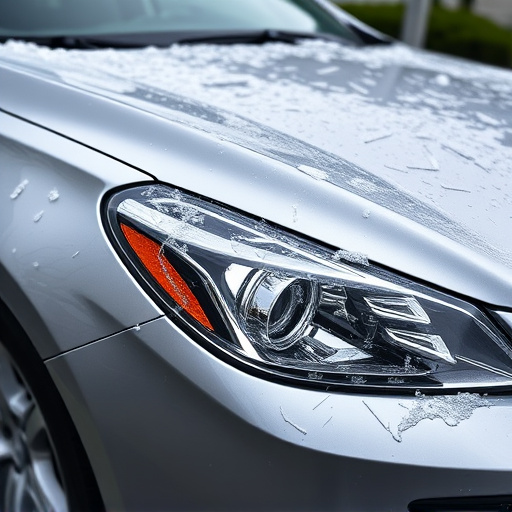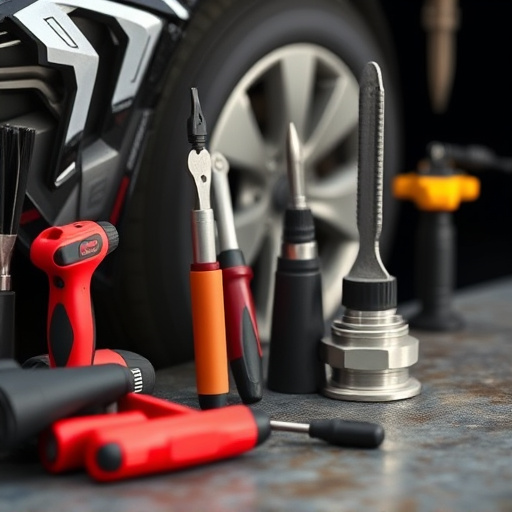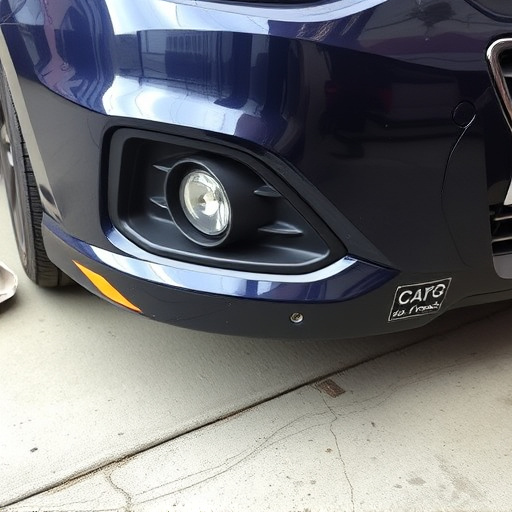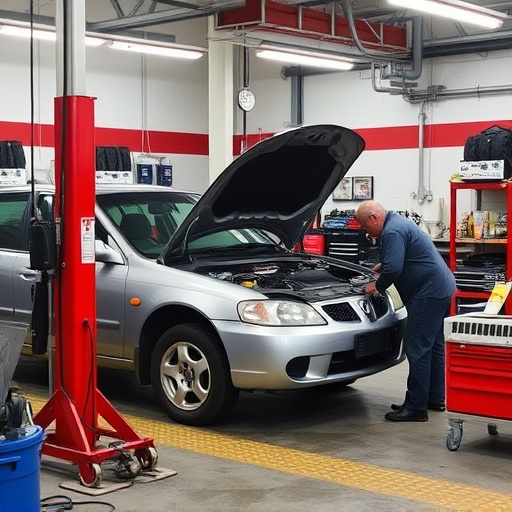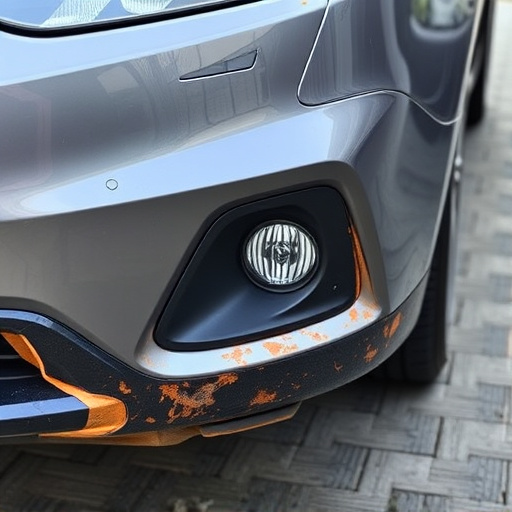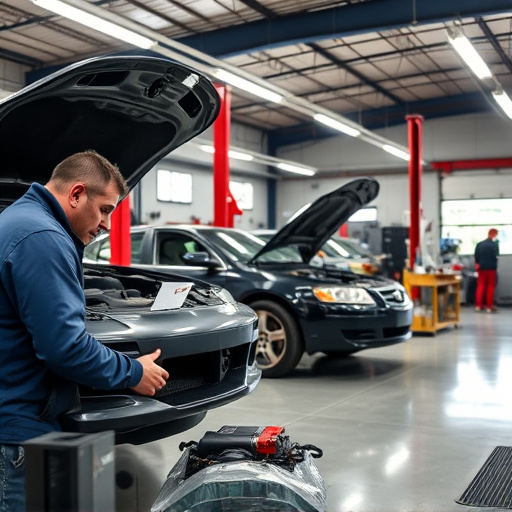Prompt and professional repair is crucial for Tesla airbag system safety. Specialized tools, trained technicians, and diagnostics are required to fix issues like faulty sensors or control units. Tesla recommends repairs at authorized centers, using protective gear and specialized tools for SRS module resets. Proper workspace preparation and noise mitigation ensure accurate, safe repairs for maximum passenger protection.
In today’s digital era, understanding the intricacies of a Tesla’s airbag system is crucial for safety and maintenance. This comprehensive guide delves into the intricate world of Tesla airbag system repairs, focusing on the SRS (Supplemental Restraint System) module reset process. By navigating the steps outlined here, folks can ensure their vehicles are prepared to respond swiftly in emergencies. Remember that proper tools and safety precautions are essential for this game-changer task, enabling you to revolutionize your vehicle’s safety features.
- Understanding Tesla Airbag System Repair Process
- Tools and Safety Precautions for SRS Module Reset
- Step-by-Step Guide to Performing an SRS Reset
Understanding Tesla Airbag System Repair Process

The Tesla airbag system is a critical safety feature that requires prompt and professional repair when compromised. Understanding the repair process is essential for vehicle owners to ensure their well-being on the road. When an airbag deployment mechanism fails or the SRS (Supplemental Restraint System) module experiences issues, it’s not as simple as a quick fix. The process involves careful diagnostics to identify the problem, whether it’s a faulty sensor, a malfunctioned control unit, or damaged airbags themselves.
Tesla recommends that only authorized service centers perform airbag system repairs due to the intricate nature of these components’ integration into modern vehicles. These centers have access to specialized tools and trained technicians who can accurately diagnose issues related to airbags, seatbelts, and crash sensors, ensuring compliance with safety standards. While unrelated to car scratch repair or auto glass repair, proper airbag system maintenance is vital for overall vehicle safety, often requiring a level of expertise distinct from typical auto painting services.
Tools and Safety Precautions for SRS Module Reset

When undertaking a Tesla airbag system repair or SRS (Supplemental Restraint System) module reset, safety should be your top priority. This process involves sensitive electronic components and high-pressure airbags, necessitating specific tools tailored for precision and accuracy. A multimeter, for instance, is crucial for diagnosing electrical issues while an airbag tool kit enables safe resetting without damage or activation of the airbags. Additionally, a static discharge strap safeguards against electrical shocks that could harm both you and the vehicle’s electronics.
Before beginning the reset process, ensure your work area is well-ventilated to prevent the buildup of hazardous gases released during certain diagnostic procedures. Wear protective gear including gloves, safety glasses, and a respirator mask. If conducting fleet repair services or working on a car near a bustling location, choose a workspace that minimizes disruption from passing traffic or loud noises that could interfere with delicate sensors and circuitry. Remember, proper preparation is key to successful Tesla airbag system repair without compromising safety.
Step-by-Step Guide to Performing an SRS Reset

Performing an SRS (Supplemental Restraint System) reset is a crucial step in Tesla airbag system repair, ensuring optimal safety functionality. Here’s a step-by-step guide to help you navigate this process safely and effectively. Begin by locating the SRS control module, typically found under the steering wheel or within the vehicle’s dashboard. Next, connect a specialized diagnostic tool to access the module’s computer system. This tool will allow you to initiate the reset procedure.
Follow the instructions on your diagnostic software to send a signal that triggers the SRS module to perform a self-diagnostic test and subsequent reset. During this process, you may observe various functions within the car, like seatbelt sensors and airbag indicators, being tested. Once complete, disconnect the tool and re-test the system by simulating an emergency scenario to confirm successful Tesla airbag system repair and SRS module reset. This meticulous approach guarantees that your luxury vehicle’s safety features are restored to their optimal state, enhancing passenger protection during every journey.
The process of Tesla airbag system repair, particularly the SRS (Supplemental Restraint System) module reset, is a delicate yet essential procedure for maintaining vehicle safety. By understanding the steps outlined in this article—from the necessary tools and safety precautions to the step-by-step guide—you can effectively address potential issues with your Tesla’s airbag system. Regular maintenance ensures optimal performance, enhancing both driver and passenger safety on the road.
